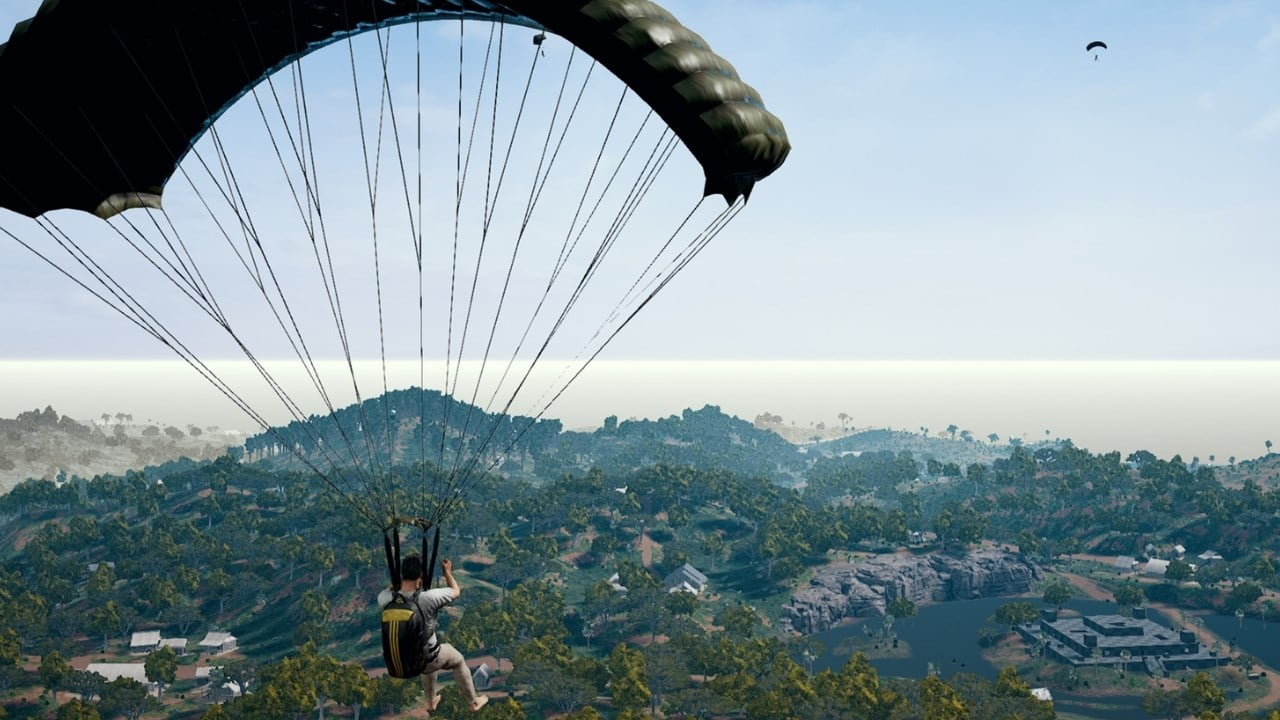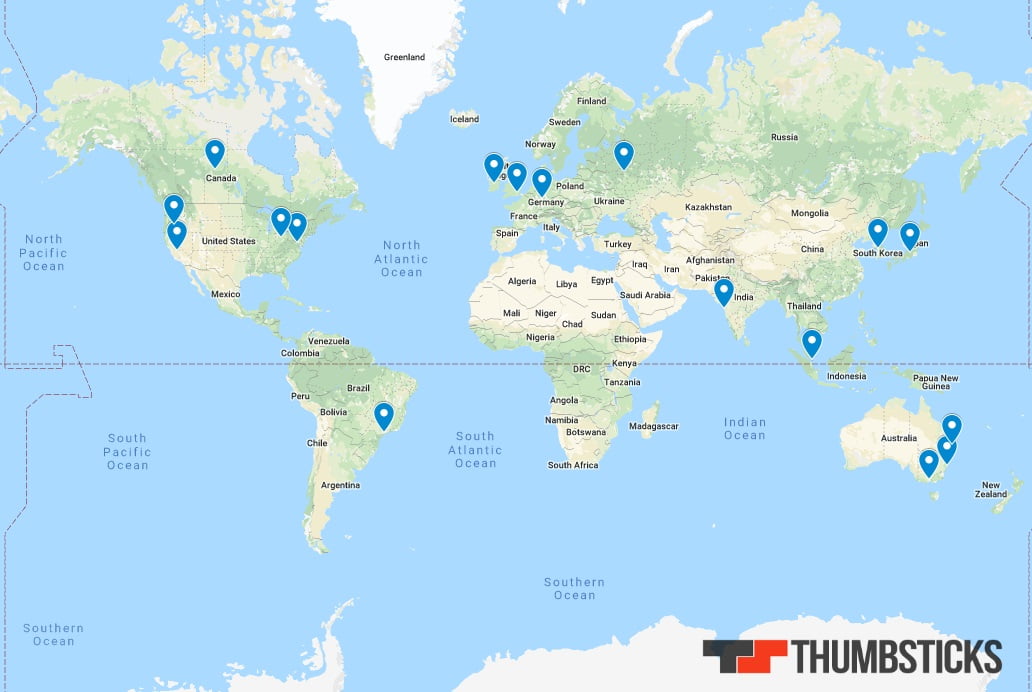Having issues with your ping response, or just curious about how things work? Here’s the rundown on where the PUBG servers are located.
PUBG, like most modern online games, hosts its servers in the cloud. Gone are the days of friends hosting game servers on PC hardware. Gone are the days of hopping between lobbies to try and find the lowest latency. Gone is much of the hassle of playing games online, thanks to the cloud.
The cloud, if you’re not clear on what that nebulous buzzword means, is a group of distributed servers and services that can be rented, utilised and scaled by lots of different companies. This means the days of ordering more server power than you need and feeling like you wasted money are done. Or worse, running out of capacity and having to wait for Dell or HP to ship you some more hardware. You also don’t need to provide power, network, and cooling infrastructure. (Which is even more difficult to expand if you need more of it.)
That doesn’t mean nobody has to buy servers or other hardware, though. The cloud operators – like Microsoft, Google, and Amazon – have millions of servers in thousands of data centres across the globe. But it means cloud customers don’t have to spend money in lumps. Capital expenditure is instead replaced instead by predictable monthly rental costs, while cloud providers benefit from enormous economies of scale based on the sheer volume of hardware they go through.
That’s good for us, because it means developers and publishers of online games can focus on the thing they need to – developing and maintaining the game – while someone else takes care of the grunt behind it. And the distributed nature of cloud computing means that there are services hosted from all over the globe.
But if you’ve been struggling with latency, you might be wondering where your nearest PUBG servers are. First, though, let’s jump into a little primer on latency.

One ping only
Network latency, commonly referred to as ping response time, is how long a data packet – or ping – takes to complete a round trip. It’s named after sonar pings on submarines, where the distance to an object is determined by how long it takes for a sound wave to travel to the object, bounce off it, and be returned to its source. Yes, just like in The Hunt for Red October.
So if someone talks about having low ping, it means that the round trip for their data packets is taking less time. Anything under 10 ms is fantastic, but the closer to zero, the better. If ping response times are high, it means the round trips are taking longer. This generally means network performance is worse and the experience is jittery.
High latency can be down to any number of factors, from cheap hardware and technical faults to longer or more complex routes, but as a general rule of thumb, shorter distances are better. A round trip from Thumbsticks HQ here in London to servers in Europe is always going to be quicker than the round trip to servers in the US, for instance, simply because there’s an additional 3,500 miles of undersea fibre optic cable for the data packets to traverse. Twice. (It’s a round trip, remember.)
So keeping in mind that shorter distances are better, you’re probably wondering how close your nearest PUBG server location is. We’ve got you covered.
PUBG server locations
At the time of writing, August 2019, here’s a map of the PUBG server locations:

Keep in mind that not all of these locations are exact. One data centre is listed as “Central Canada” which probably isn’t, you know, in the middle of Canada. But without knowing whether that meant Toronto or Winnipeg or Montreal, we just plonked it in the middle of Canada as a whole. Ditto the makers in Australia, where we made some educated guesses that “East Australia” meant Brisbane and “South Australia” meant Melbourne, for example. The one in Sydney is actually listed as Sydney, though. Weird. There’s also technically a pin for “Korea” and a pin for Seoul, but they’re basically in the same place so you can only see one.
And here’s a written list of those PUBG servers, for clarity:
- Virginia, US
- Ohio, US
- California, US
- Oregon, US
- Canada
- São Paulo, Brasil
- Ireland
- London, UK
- Frankfurt, Germany
- Mumbai, India
- Japan
- Seoul, Korea
- Korea
- Singapore
- Sydney, Australia
- Moscow, Russia
- East Australia
- South Australia
Something that’s immediately apparent is the large expanses with no PUBG server locations. As is often the case, Africa, the Middle East, Central America, and Central Asia aren’t covered at all. If you’re in those regions you’ll find high latency as you have to connect to PUBG servers thousands of miles away in Europe, India, or the Americas.
South America has one location to cover the whole continent, admittedly in one of its most densely-populated regions. Southern Europe and large swathes of Southern Asia aren’t covered directly, but will be fed by nearby locations, helped by decent internet connectivity. Australia is well-covered on the East Coast, so New Zealand will be fine, but Western Australia and the wider continent of Australasia will be less well-served, and might find themselves with better latency to Singapore than Sydney.
It’s a balancing act. Companies can’t put servers in every single location, and if the cloud provider – in this instance, AWS – can offer an ingress into their private network via a nearby point of presence, even if the PUBG servers themselves are further away? You’ll find the latency much improved, because private fibre is always going to be lower latency than public routing.
That isn’t quite the full story on PUBG server locations, however.
A tale of two clouds
Those PUBG servers, hosted on Amazon Web Services, are the PC servers specifically. That’s the platform PUBG was originally released on when it launched into Steam Early Access in March 2017. As far as we know, the PC version of the game is still hosted from AWS, and has expanded into more servers and more regions as time has gone on.
But then PUBG released onto Xbox One. Microsoft has its own cloud service, called Azure. It’s commonly understood that Microsoft hosts PUBG services on its Azure cloud for Xbox One players, but we don’t know where those are located. It’s more difficult to extract server IP addresses and discern their location in a closed environment like consoles, but expect to see a similar global distribution. There’s a reason AWS has data centres in those locations, and it’s because they have an abundance of connectivity at big fibre exchanges. Microsoft operates its Azure data centres based on similar principles.
As for the PUBG PS4 servers? Not a clue. We have no idea which way that one’s gone. They could be on AWS with the PC infrastructure, or they could be hosted on Azure with the other console infrastructure. There’s no architectural reason why PlayStation servers can’t be hosted on Microsoft’s cloud infrastructure, but again, because consoles are a walled garden, it’s hard to know for sure.






